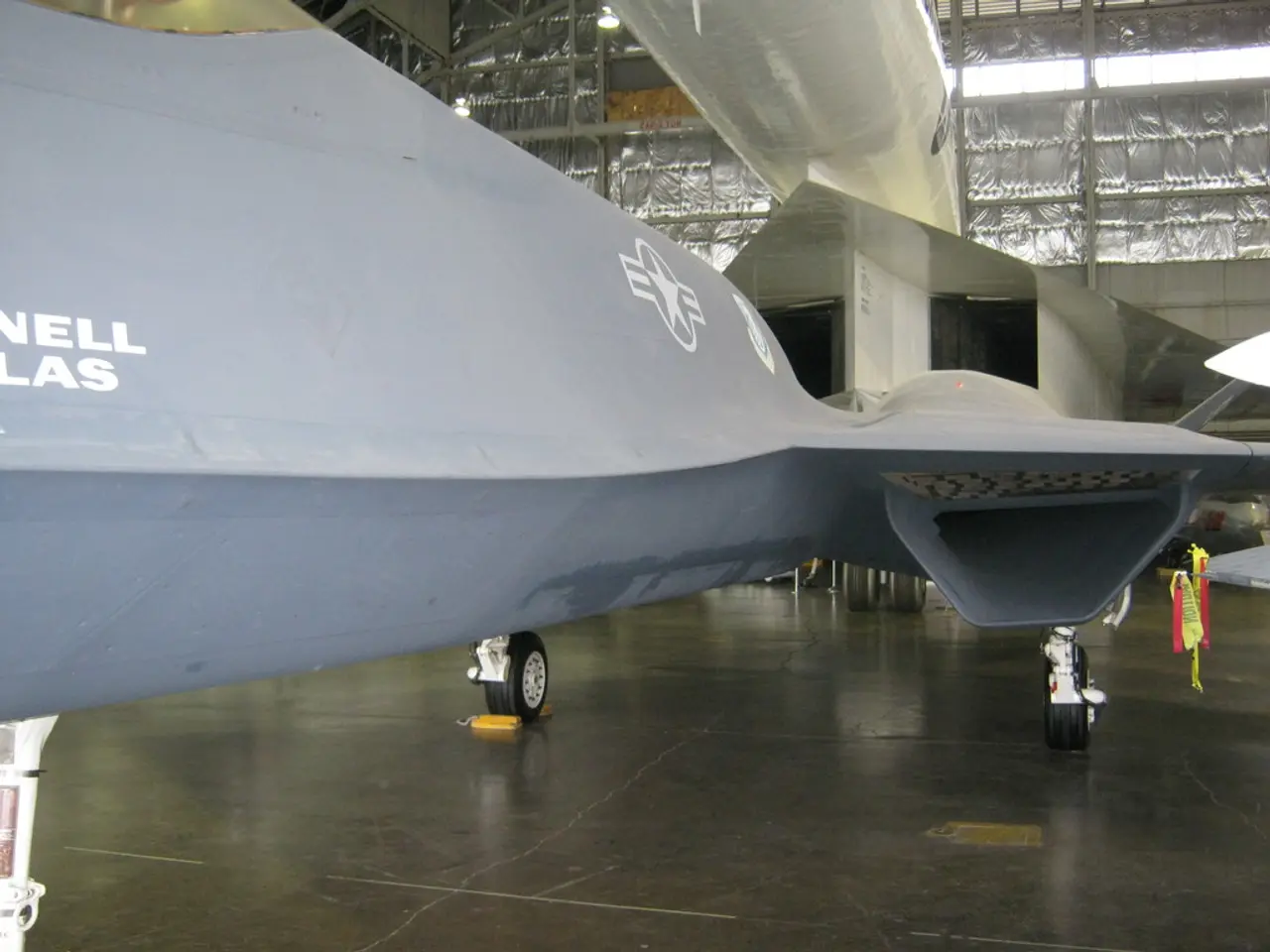Boeing's Shares Outlook: Will the Aeronautics Titan Rise or Continue to Plummet?
=====================================================================
Boeing, the American aerospace giant, is gearing up for a slow but steady recovery, as it navigates through a series of operational and financial hurdles. Despite facing headwinds, the company remains optimistic about its long-term prospects, backed by a robust order backlog and strong demand for commercial and defense aircraft.
In an effort to stabilise its cash flow, Boeing announced a $19 billion share sale and significant job cuts, with 17,000 positions set to be eliminated. The company is also working diligently to address ongoing parts shortages and supplier constraints to prevent further delays.
One of the key challenges Boeing faces is restoring investor trust, which has been eroded by a seven-week machinist strike that ended in November 2024, resulting in a 38% pay raise and a $12,000 ratification bonus. Investors will closely monitor upcoming earnings reports for insights into Boeing's financial status.
Analysts show moderate optimism, with consensus "Moderate Buy" ratings and price targets ranging roughly between $230 and $275 for 2025, reflecting expectations of 8% to 35% price appreciation from current levels. However, predictions vary, with some forecasts around $250-$310 by late 2025, while others suggest potential downside or volatility.
While Boeing has a strong order backlog, execution risks remain a significant hurdle. Efficient order fulfillment will be crucial for Boeing to regain investor confidence. The company is gradually overcoming supply chain issues and increasing production of models like the 737 Max, which supports steady revenue growth and delivery fulfillment.
However, risks such as supply chain disruptions, geopolitical tensions, and profitability challenges remain key factors that could limit or delay Boeing's full recovery. Geopolitical tensions may impact Boeing’s defense contracts, and overall market volatility remains elevated, posing risks to stock stability.
Economic conditions such as interest rates, inflation, and overall airline industry health will also impact Boeing's financial outlook. Airbus is gaining market share, and new entrants may further disrupt the traditional duopoly in commercial aviation. Other analysts remain cautious due to concerns over Boeing's debt levels, rising labor costs, and potential further production hiccups.
In conclusion, Boeing is poised for a slow but steady recovery with moderate upside potential driven by operational improvements and demand. However, investors should remain cautious due to ongoing profitability concerns and external risks affecting stock volatility. As of now, Boeing's stock price is currently trading at $185.56 per share.
- Boeing aims to boost its financial status by managing a $19 billion share sale and reducing its workforce by 17,000 positions.
- The aerospace industry in Africa could witness increased opportunities as Boeing focuses on fulfilling its order backlog, particularly for commercial and defense aircraft.
- The management of Boeing's supply chain will be vital in ensuring efficient deliveries and regaining investor confidence.
- Finance and logistics professionals are keeping a close eye on Boeing's earnings reports to gather insights into its financial status.
- Aviation industry analysts have expressed moderate optimism about Boeing's long-term prospects, with price targets ranging between $230 and $275 for 2025.
- The aerospace sector must overcome geopolitical tensions, potential supply chain disruptions, and profitability challenges to achieve a full recovery, with Airbus and new entrants posing further competition in the commercial aviation market.








